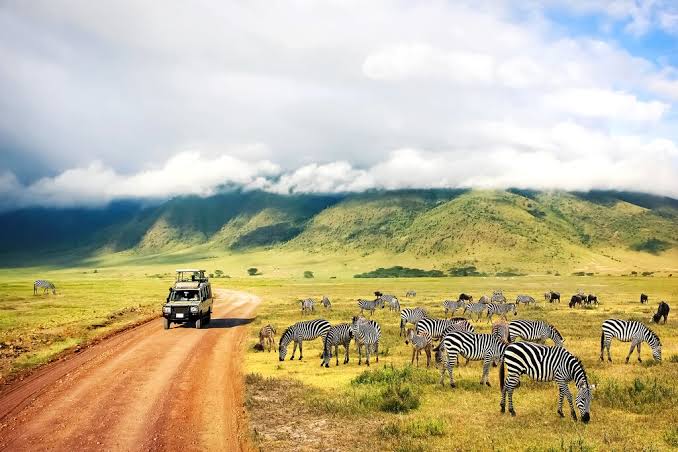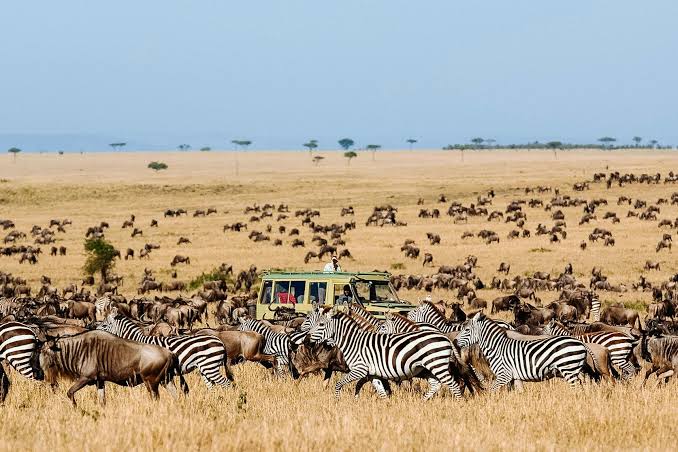 Tanzania has emerged as a beacon of successful wildlife conservation in Africa, demonstrating significant progress in protecting its rich biodiversity. Through comprehensive strategies encompassing anti-poaching measures, community engagement, scientific research, and sustainable tourism, the nation has achieved remarkable milestones in preserving its wildlife heritage.
Tanzania has emerged as a beacon of successful wildlife conservation in Africa, demonstrating significant progress in protecting its rich biodiversity. Through comprehensive strategies encompassing anti-poaching measures, community engagement, scientific research, and sustainable tourism, the nation has achieved remarkable milestones in preserving its wildlife heritage.
Tanzania’s concerted efforts against poaching have led to a notable resurgence in key wildlife populations. The elephant population has increased from approximately 43,330 in 2014 to around 60,000 in recent years, positioning Tanzania among the top three African countries with the largest elephant populations. Black rhino numbers have risen from 163 in 2019 to 238 by 2022, surpassing the national target of 205 rhinos by the end of 2023. These successes are attributed to enhanced anti-poaching initiatives, including increased patrols, community-based conservation programs, and stricter enforcement of wildlife protection laws.
Tanzania boasts the largest lion population in Africa, with approximately 17,000 individuals. This achievement underscores the country’s effective habitat management and conservation policies, ensuring the survival of this iconic species.
To inform and guide conservation efforts, Tanzania has invested in comprehensive wildlife monitoring. For the 2025/26 wildlife census, the government allocated TSh 4 billion for a nationwide survey coordinated by the Tanzania Wildlife Research Institute (TAWIRI). This initiative aims to collect accurate data on key species, including elephants, buffaloes, elands, giraffes, and zebras, to inform policy development and conservation strategies.
Tanzania has implemented robust measures to combat poaching and the illegal wildlife trade. The Wildlife Policy Implementation Strategy and the Tanzania Elephant Management Plan (2023–2033) were launched to strengthen anti-poaching efforts and promote sustainable wildlife management. Innovative approaches, such as training African giant pouched rats to detect illegal wildlife products, have been introduced to enhance anti-trafficking operations.
Recognizing the critical role of vultures in ecosystems, Tanzania has intensified efforts to protect these endangered birds. A Vulture Action Plan was developed in collaboration with Nature Tanzania and BirdLife International to address threats such as poisoning and habitat loss. Community engagement and education are key components of the strategy.
Tanzania’s conservation success is closely linked to community involvement and eco-tourism. Programs have been implemented to reduce conflicts between wildlife and local communities, including rapid response teams and educational initiatives. The country’s commitment to sustainable tourism has led to increased revenue and global recognition, further supporting conservation efforts.
 Wildlife conservation has also contributed to Tanzania’s economy. The government projects an annual revenue of approximately $968,000 from hunting concession fees, which supports both conservation initiatives and community development.
Wildlife conservation has also contributed to Tanzania’s economy. The government projects an annual revenue of approximately $968,000 from hunting concession fees, which supports both conservation initiatives and community development.
Tanzania’s dedication to wildlife conservation has garnered international acclaim. Serengeti National Park is recognized as one of the most impressive natural spectacles globally, supporting vast migratory systems and diverse predator-prey interactions. With continued investment in conservation strategies, community engagement, and sustainable tourism, Tanzania is poised to maintain and enhance its role as a leader in wildlife preservation.

